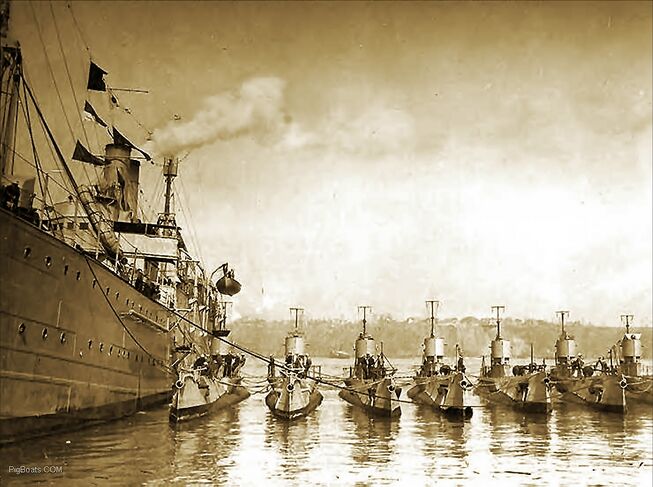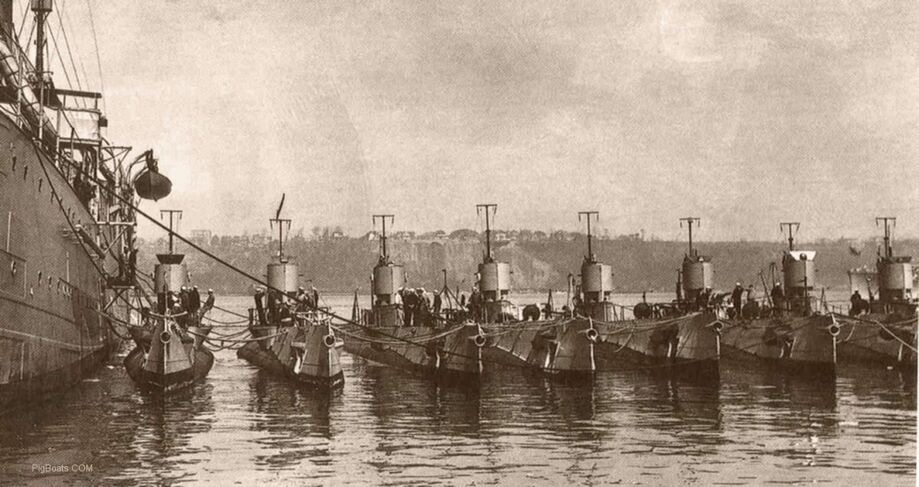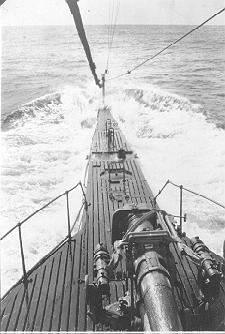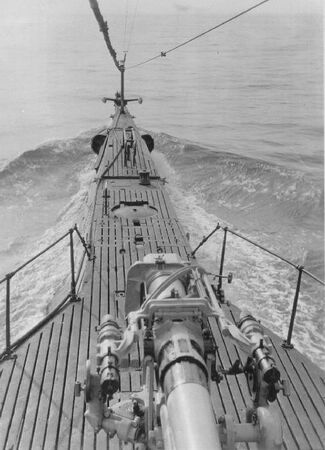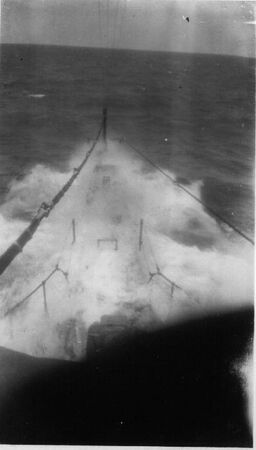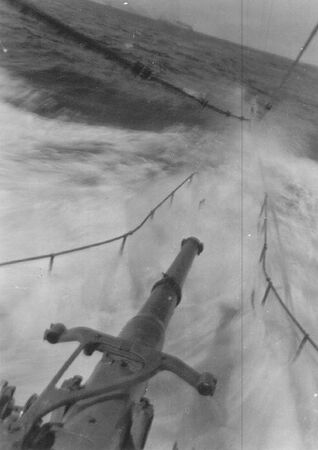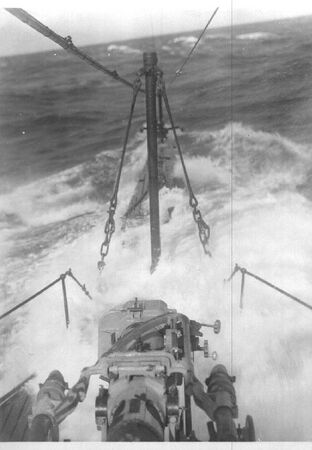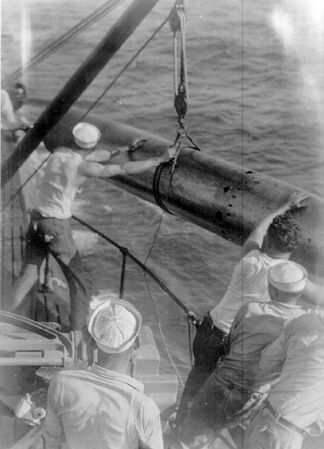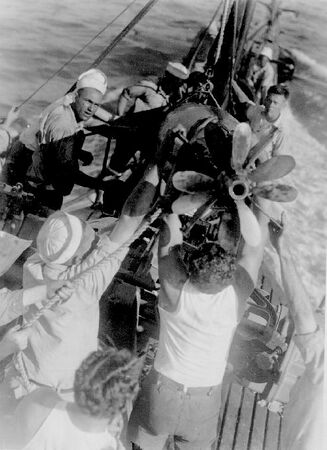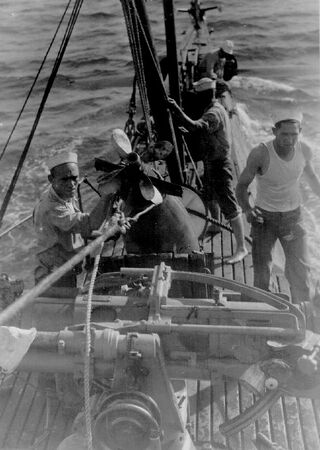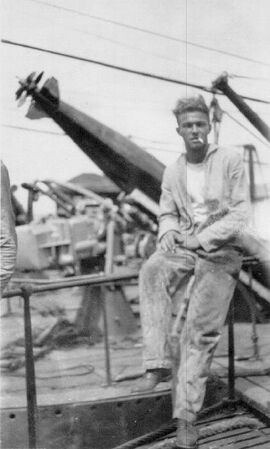R-class group photos: Difference between revisions
Pbcjohnston (talk | contribs) (Added Lake construction photo) |
Pbcjohnston (talk | contribs) (Moved and updated Groton picture) |
||
| Line 74: | Line 74: | ||
[[File:R-Class Camden moored upclose03.jpg|left|500px]] | [[File:R-Class Camden moored upclose03.jpg|left|500px]] | ||
<div style="text-align: justify;"><span style="color:#00008B">Close up of a vessel on the far shoreline. It appears to be a Navy design and could possibly be the mine sweeper USS Robin (AM-3) which had just returned from duty sweeping mines in European waters from WW I. | <div style="text-align: justify;"><span style="color:#00008B">Close up of a vessel on the far shoreline. It appears to be a Navy design and could possibly be the mine sweeper USS Robin (AM-3) which had just returned from duty sweeping mines in European waters from WW I. | ||
<small>Photo from the private collection of Ric Hedman.</small> | <small>Photo from the private collection of Ric Hedman.</small> | ||
| Line 216: | Line 209: | ||
<small>Photo provided by MMCM(SS) Rick Larson, USN (Ret.)</small> | <small>Photo provided by MMCM(SS) Rick Larson, USN (Ret.)</small> | ||
[[File:Red bar sub.jpg]] | |||
[[File:R-class unknown in Groton.jpg|left|500px]] | |||
<div style="text-align: justify;"><span style="color:#00008B">An unknown R-class submarine moored at Submarine Base New London, Groton, CT., approximately 1931-1935. Some of the buildings in the background are still in existence 100 years later. | |||
<small>Photo from the private collection of Ric Hedman.</small> | |||
[[File:Red bar sub.jpg]] | [[File:Red bar sub.jpg]] | ||
Latest revision as of 16:15, 26 April 2024
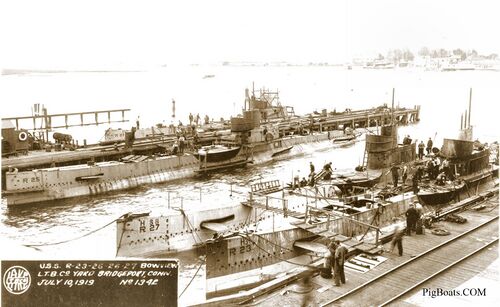
National Archives photo.
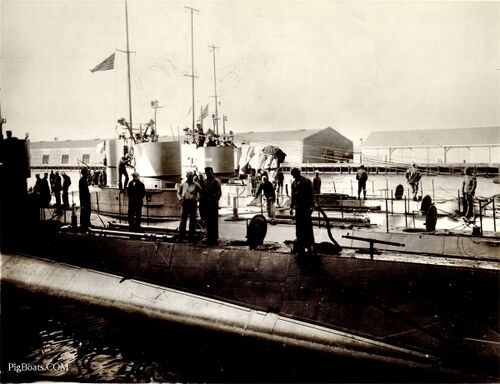
This photo was taken in approximately March 1919, (about 6 months after R-17's commissioning), at the San Pedro piers near Los Angeles, California. The boat closest to the camera is believed to be the R-18 (SS-95). At this time the R-18 did not have any anti-fouling apparatus mounted around her "T" shaped SC Tube sound gear. The boat with the triangle is the R-17. The boat with the "plus sign" on her conning tower is the R-19 (SS-96). Both of these submarines have men and officers on the bridges. The last submarine in this nest is the R-20 (SS-97), just one of her three vertical stripes can be seen.
The boats have their portable navigation light mounted to the "Y" shaped spreaders used to pass the clearing wires, (used for passing mine cables over the submarine). These lights are hung on large "hooks" on the end of each spreader. The lights were then plugged into waterproof electrical outlets. At the extreme left, just above the man's head on the bridge, one of these "hooks" for the nav lights can be seen. The R-19 also has crew bedding hung on the clearing wires for airing and drying.
All boats are carrying the 3"/23 caliber Mk 9 gun built at the Naval Gun Factory. The muzzle end of the gun can be seen protruding vertically through a circular gun shield, with the breech end of the gun retracted into a watertight tub down in the forward battery compartment. These guns were disliked by the crews as being too little in hitting power and dangerous to use as they had a tendency to retract spontaneously, often times onto feet or toes. They were soon to be replaced by the 3"/50 caliber Mk 6 gun.
The nest as a whole seems to be warping away from the pier. The man in the center right foreground is tending a hawser still attached to the pier. A man at the extreme right on the R-19 seems to be tending a line attached to the R-17. The men on the deck of the R-20 all seem to be facing away from the camera as if in expectation of something to happen on that side of the submarine. The gangplank from the R-17 to the R-18 has been removed, the one between the R-17 and R-19 is still there. It can't be seen if the one between R-19 and R-20 is still in place.
Photo in the private collection of Ric Hedman.
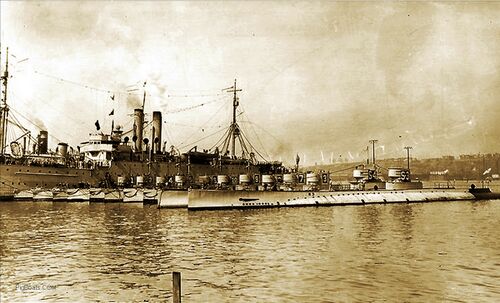
U.S. Navy photo.
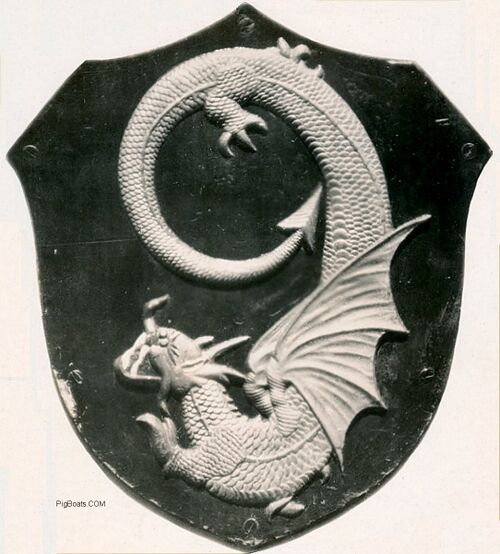
Photo from the private collection of Ric Hedman.
U.S. Navy photos.
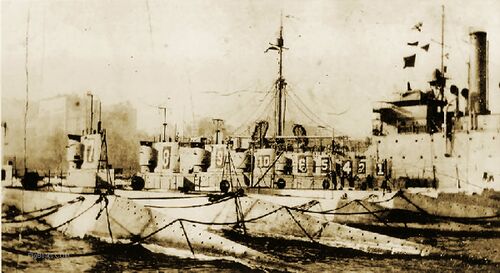
U.S. Navy photo.
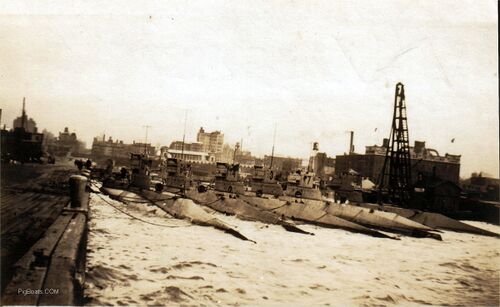
U.S. Navy photo.
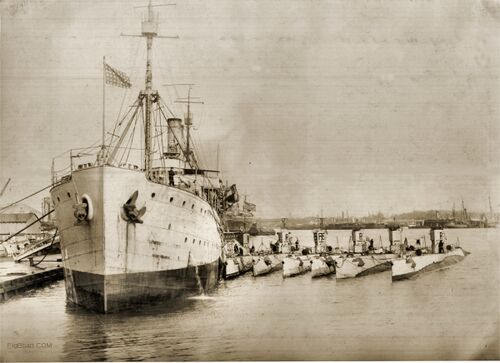
The photo is purported to have been taken on May 2, 1920 at New York City. The background does not look to be the New Jersey shore seen in images above but more like the East River and Brooklyn. More research is still needed.
An officer can be seen standing on the deck of the Camden in front of one of the four 4"/50 caliber guns the Camden carried. She also carried two 3"/50 caliber guns. There appears to be other Navy vessels moored near and around her and the submarines.
Photo from the private collection of Ric Hedman.
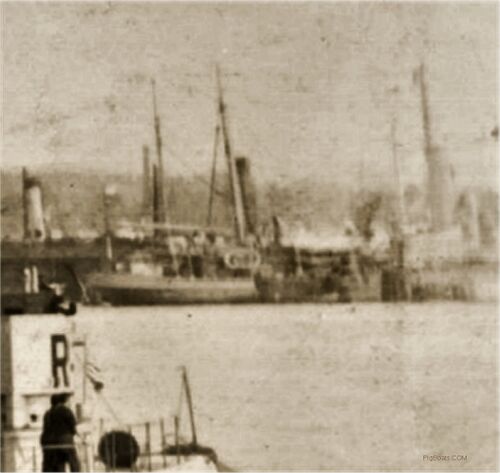
Photo from the private collection of Ric Hedman.
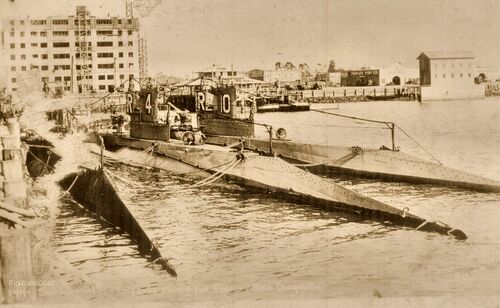
Photo from the private collection of Ric Hedman.
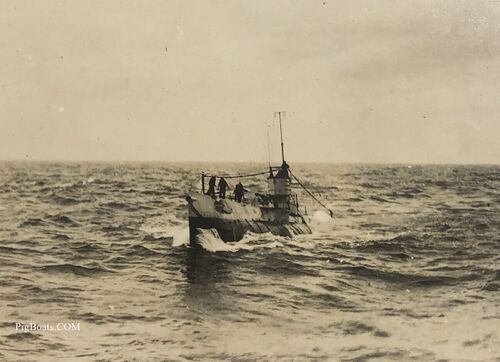
An unknown R-class submarine in a choppy sea, circa 1919-1920. The webmasters are speculating that this was during the transit from California to Hawaii. There is a bit of a rough sea running, and the boat is cresting a wave with the bow lifted and the stern submerged. That long transit would not have been much fun for the crew in anything other than calm seas.
Photo from the private collection of Ric Hedman.
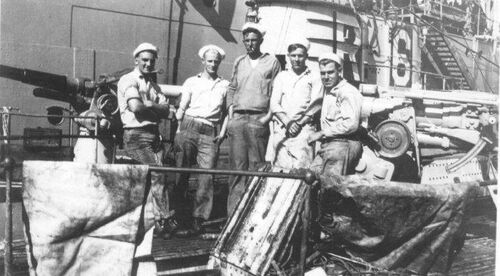
Photo from MMCM(SS) Rick Larson, USN (Ret.)
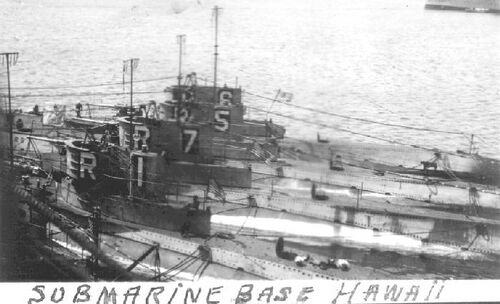
Photo provided by MMCM(SS) Rick Larson, USN (Ret.)
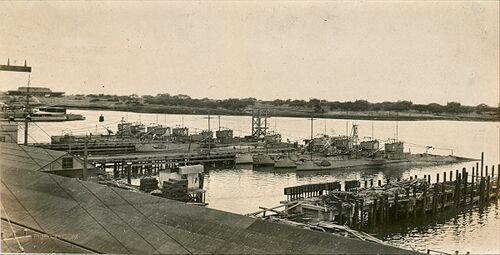
Photo from the private collection of Ric Hedman.
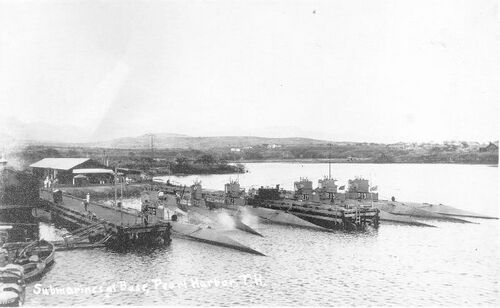
Six R-class submarines moored at Submarine Base Pearl Harbor, 1921-1922. From left to right: R-18, R-16, R-20, R-17, R-15, and R-19. This was very early in the development of the base. Conditions there in this period were still quite primitive and the base was physically separated from the shipyard by quite a bit.
USN photo from the private collection of Ric Hedman.
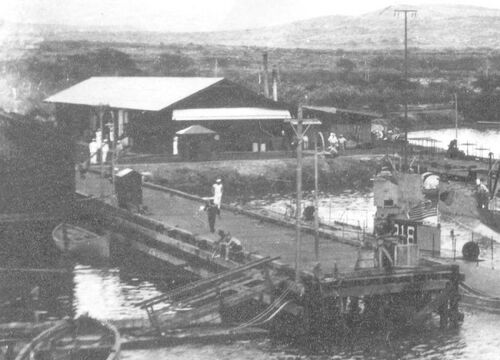
A closeup of the photo above, showing details of the middle pier and the buildings of the small sub base in the background.
USN photo from the private collection of Ric Hedman.
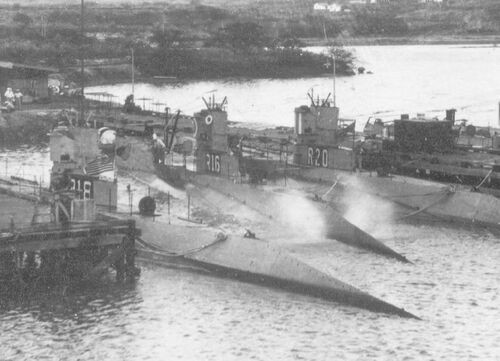
A closeup of the three boats on the left in the above photo. R-16 has both engines running and is warped out from the side of R-20. However, she is not getting underway or mooring as there are no line handlers topside and no one on the bridge, just one sailor keeping an eye on the lines. Most likely she is running engine tests that involve turning propellers so she was moved out a bit to ensure there was no interference with R-20.
USN photo from the private collection of Ric Hedman.
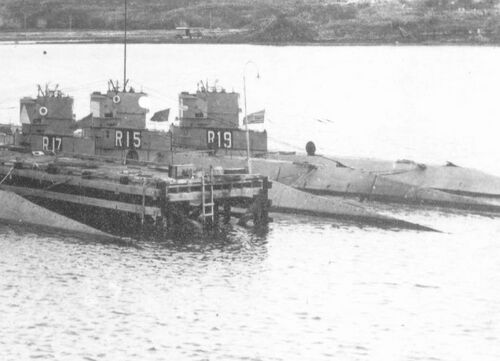
Another closeup showing details of the boats on the right side of the photo above.
USN photo from the private collection of Ric Hedman.
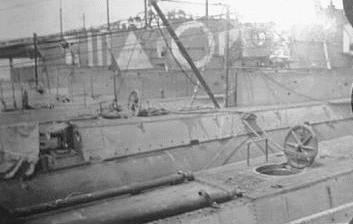
Photo from the private collection of Ric Hedman.
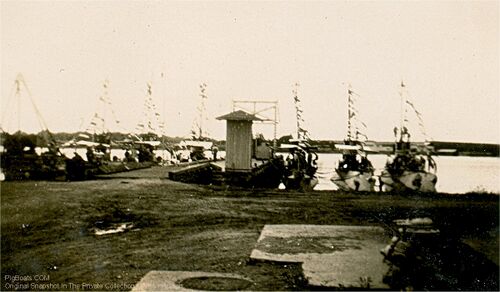
Photo from the private collection of Ric Hedman.
Photos in the private collection of Ric Hedman.
Photos in the private collection of Ric Hedman.
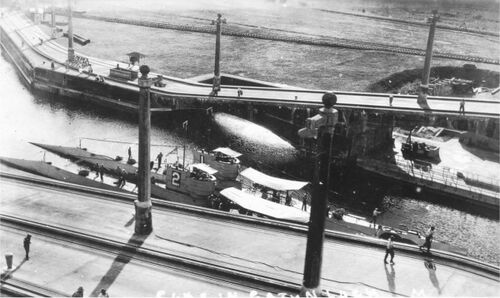
The R-2 was enroute to New London, Ct. and attached to Submarine Division 4 (SUBDIV 4) and for the next ten years served as a training ship for the Submarine School at New London and for the Yale University NROTC unit.
Photo provided by MMCM(SS) Rick Larson, USN (Ret.)
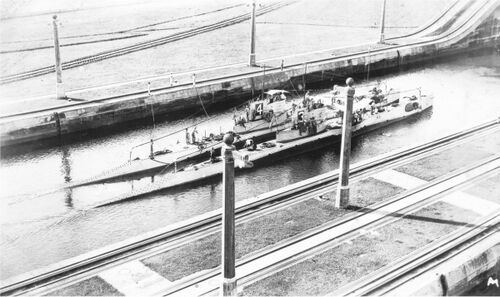
The R-4 was to join R-2 in New London, serving as a training ship at the Submarine School and for the Yale University NROTC unit.
Photo provided by MMCM(SS) Rick Larson, USN (Ret.)
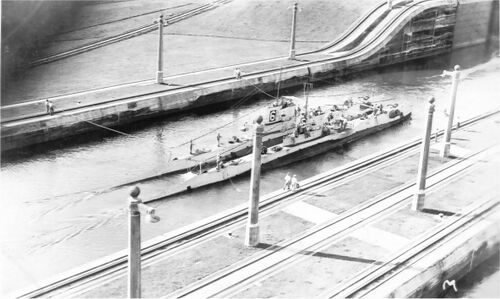
Depression era economics and the provisions of the Washington and London Naval Treaties were forcing the Navy to lay up these relatively new submarines. The R-class submarines put into the mothball fleet in Philadelphia were reactivated in 1940 and put back into service as war clouds loomed. Keeping them around proved to be a good decision.
Photo provided by MMCM(SS) Rick Larson, USN (Ret.)
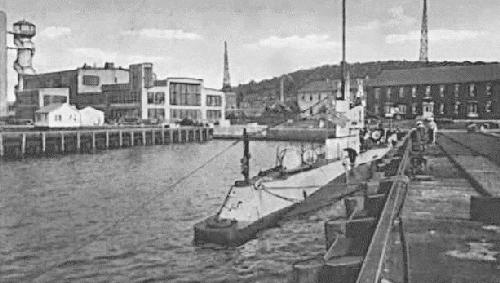
Photo from the private collection of Ric Hedman.
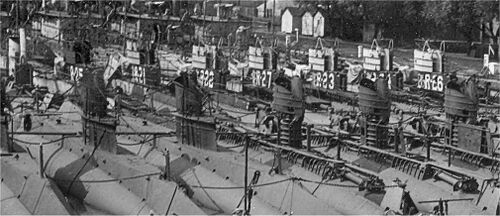
This photo was taken at the Philadelphia Navy Yard in 1930. These are all WWI era submarines that have been decommissioned and are awaiting disposal. None would ever see active service again. In the background are seven Lake design R-boats, ex-R-21 through ex-R-27. To the left of ex-R-25 is a K-class boat. In the foreground are three L-class and three K-class boats.
Photo from the private collection of Ric Hedman.
Page created by:
Ric Hedman & David Johnston
1999 - 2023 - PigBoats.COM©
Mountlake Terrace, WA, Norfolk, VA
webmaster at pigboats dot com

